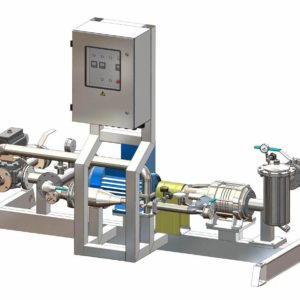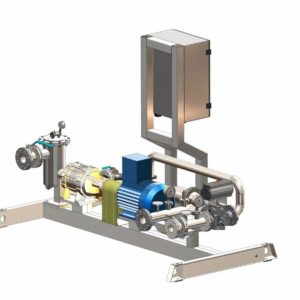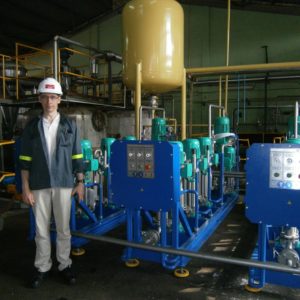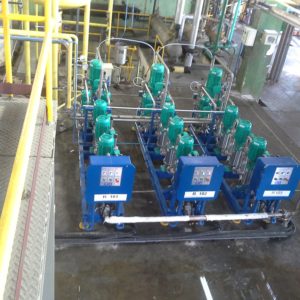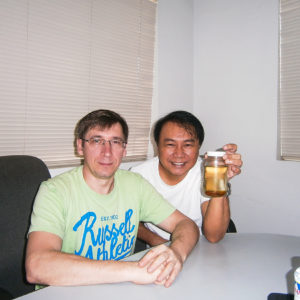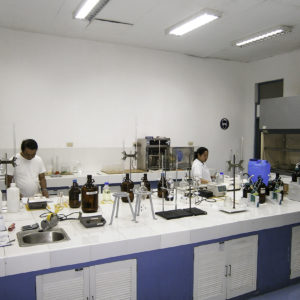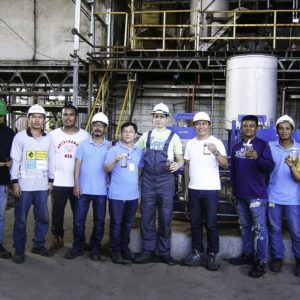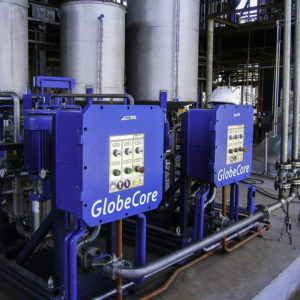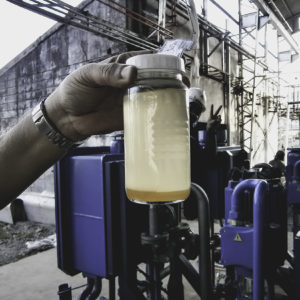Fuel blending systems
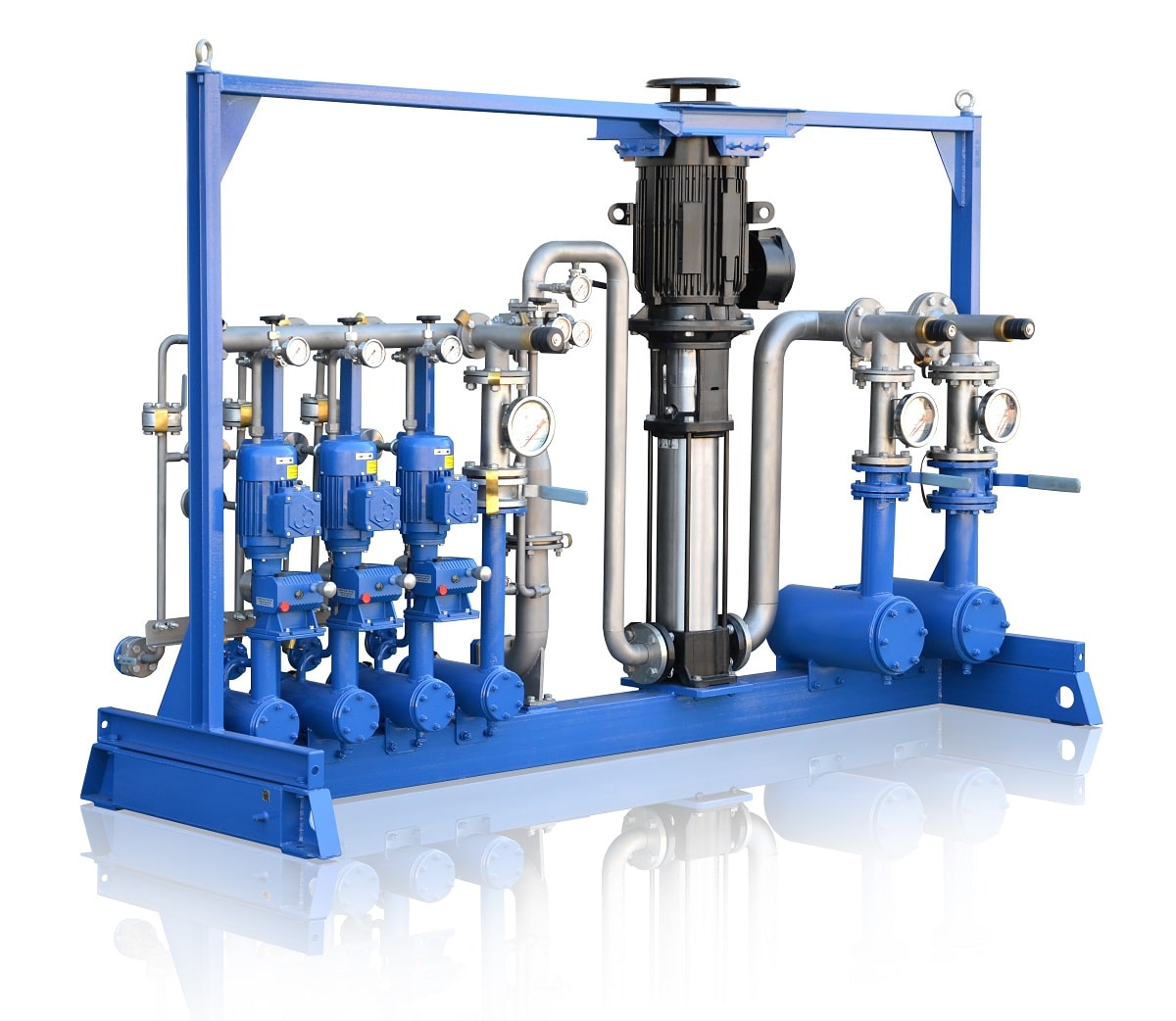
GlobeCore fuel blending system USB-1 is designed to be used during the various mixing processes in chemical or food industries, in energy companies, oil refinery and waste utilization companies, etc. The main purpose of these system is intensification of dispersion, homogenization and emulsification and blending of seemingly immiscible liquids and suspensions. The final product is a steady mix, which remains stable for a long time.
The basic configuration unit allow mixing of no more than 3 liquids (two primary liquids and one additive). The blended liquids must not contain solid particles larger than 50 micron.
The design is based on simplicity and reliability. The plant has its own filters for components and additives, a pump for supplying the main component, flow-meters, control valves, an ultrasonic mixer and pressure and vacuum sensors. The vacuum ejector is supplemented by a hydrodynamic cavitator, which undoubtedly improves the quality of mixing, producing highly dispersed liquids. Since fluid mixing speeds exceed the speed of sound, our cavitators are ultrasonic mixers. The design of the unit allows upgrade to mix up to 4 different liquids streams (two primary streams and two additives).
Unit design (basic configuration)
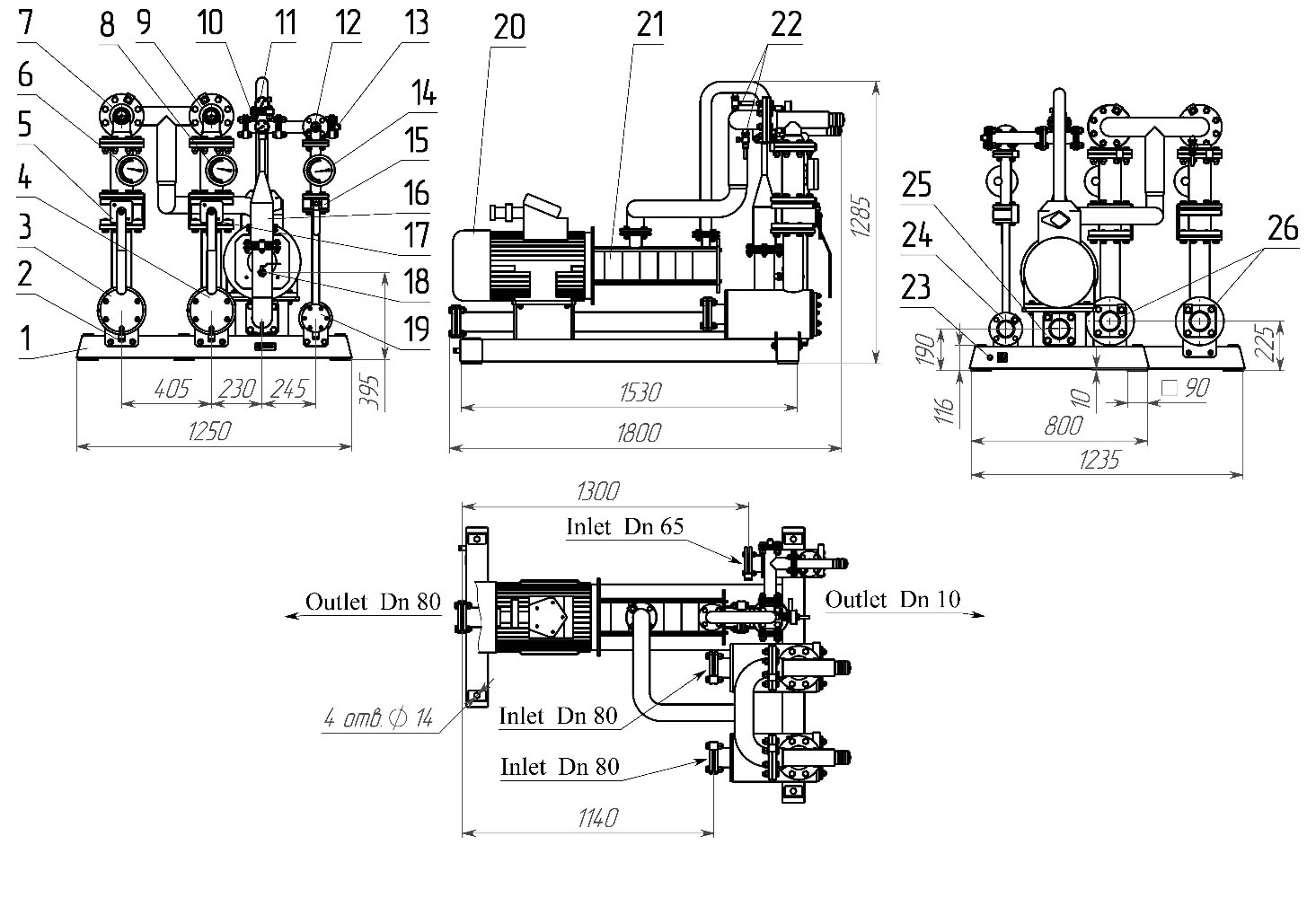
frame – 1; stoppers for liquid drain – 2; trap filters – 3, 4; flow meters (main component flow) – 6,8; regulation valves 7, 9; pressure and vacuum gauge 10; manometer (liquid pressure before mixer – supply of main components) – 11; adjust valve additional component supplied to the mixer – 12; temporary stopper – 13; flow meter (additional component flow) – 14; stop valves – 5, 15, 17; mixer – 16; sampling outlet with stop valve – 18; motor – 20; pump – 21; valves for release of air from the pump and the piping – 22; inlet flange (Dn65) 24; outlet flange – 25; two inlet flanges (Dn80) – 26;
USB-1 for light and dark petrochemical material production
light and dark petrochemical material production includes production of various materials from oil (high quality 95 octane gasoline, bio-gasoline, Euro-compliant diesel fuel, light heating oil, dark heating oil, heavy oil according to Euro-4 standards, paints, biodiesel etc).
Our units and solutions are designed for:
- Compounding of multi-component mixes to produce motor fuel, biogasoline and biodiesel, to improve octane number of low-octane fuel etc;
- Production of multi-component combustion fuels: water-fuel emulsions, water-oil emulsions for boilers, blending of various liquids and mixing additives to liquid fuels;
- Production and preparation of diesel fuel, production of winter and arctic fuel by mixing in anti-gel and anti-freezing additives, economizing of heating fuel, water-oil emulsions, heavy fuel and coking industry products.
USB-1 for compounding
Compounding it’s a process of mixing two or more fuel, oil or other ingredients to achieve specific product parameters.
Processing of oil and petrochemical products in the USB units occurs under highly intensive hydrodynamic and cavitation conditions, created by the sharp drop of pressure in the hydrodynamic (also known as trans-sonic) jet mixer with powerful physical influence on the processed fluid.
The compounding units are used for:
- Blended fuel production;
- Blended gasoline production;
- Blending diesel with biodiesel;
- Blending gasoline and bioethanol;
- Production of winter diesel fuel;
- Production of arctic diesel fuel;
- Improvement of hydro sulfur removal by pretreatment of distillates in production of modern environmentally clean fuel;
- Production of various surfactants;
- Detergent production;
- Production of lubrication materials, coolants etc, by blending a base liquid with additives.
| Specifications of the most popular of the USB unit range | |||||||
| Parameter | USB-18/3 | USB-18/5 | USB-20/3 | USB-60/3 | USB-60/5 | USB-100/4 | USB-100/5 |
| Capacity, m3/hour | 18 | 18 | 20 | 60 | 60 | 100 | 100 |
| Number of liquid ingredients mixed | 2…3 | 2…5 | 2…3 | 2…3 | 2…5 | 2…3 | 2…5 |
| Main ingredient flow, m3/hour | 17 | 11 | 13 | 57 | 50,0 | 100 | 100 |
| Additive flow, m3/hour | |||||||
| * input I | 0.25..2.5 | 2..7 | 0.25..2.5 | 0.5..3.5 | 0.1..1.0 | 0.4…4 | 0.4…4 |
| * input II | 0.1..1.0 | 0.5..3.5 | 0.1..1.0 | 0.1..1.0 | 0.0..0.02 | 0.4…4 | 0.4…4 |
| * input III | – | 0.5..3.5 | – | – | 0.25..2.5 | 2.5…25 | 0.05…0.5 |
| * input IV | – | 0.15..0.65 | – | – | 0.5..6.3 | – | 2.5…25 |
| Fuel supply pressure, MPa | 0.8 | 0.8 | 0.8 | 0.8 | 0.8 | 0.8 | 0.8 |
| Power consumption, kW | 15 | 15 | 15 | 36 | 36 | 55 | 55 |
| Output head, m, max | до 15 | до 15 | до 15 | до 15 | до 15 | до 15 | до 15 |
| Dimensions, mm | |||||||
| length | 500 | 500 | 500 | 700 | 1000 | 2000 | 2000 |
| width | 500 | 600 | 500 | 1200 | 1500 | 1400 | 1400 |
| height | 1500 | 1500 | 1500 | 1550 | 1850 | 2200 | 2200 |
| Weight, kg | 130 | 170 | 185 | 450 | 750 | 1450 | 1540 |
USB unit advantages for oil refineries:
- Compounding of blended fuels (gasoline, diesel) to reduce light fraction consumption;
- Power savings: the unit is equipped with one motor and one pump only;
- Reduction of viscosity, hydrogen sulfide, chlorine salts, ash and paraffin content in crude oil;
- Compounding of oil improves the quality of straight run fractions: reduction of sulfur content and improvement of octane number of gasoline, reduction of sulfur and cloud point of diesel fuel;
- Improvement of fraction quality reduces the costs of finishing treatment;
- All equipment certified by the corresponding international bodies.
The compounding units increase light fraction yield. It is also possible to equalize several types of oil for refinery stability. The unit saves electric energy and time and increases quality of all oil products.
Advantages for hydrodynamic acoustic caviration units:
- Low power consumption;
- High energy of cavitation;
- Cheap energy conversion into cavitation;
- Simple operation;
- Advanced controls;
- Available with any production capacity;
- Combination of several processes;
- Easy integration;
- Low metal costs;
- Simple adjustment for optimal performance.

